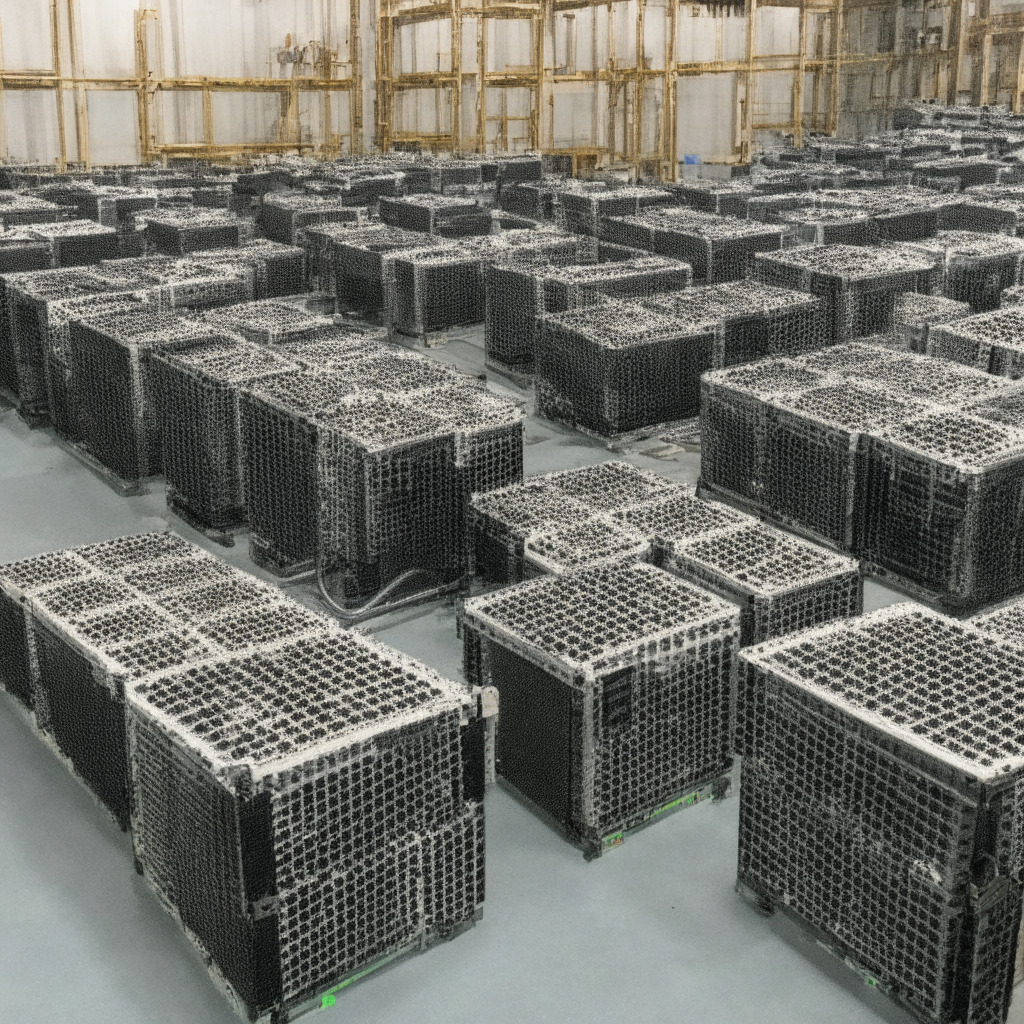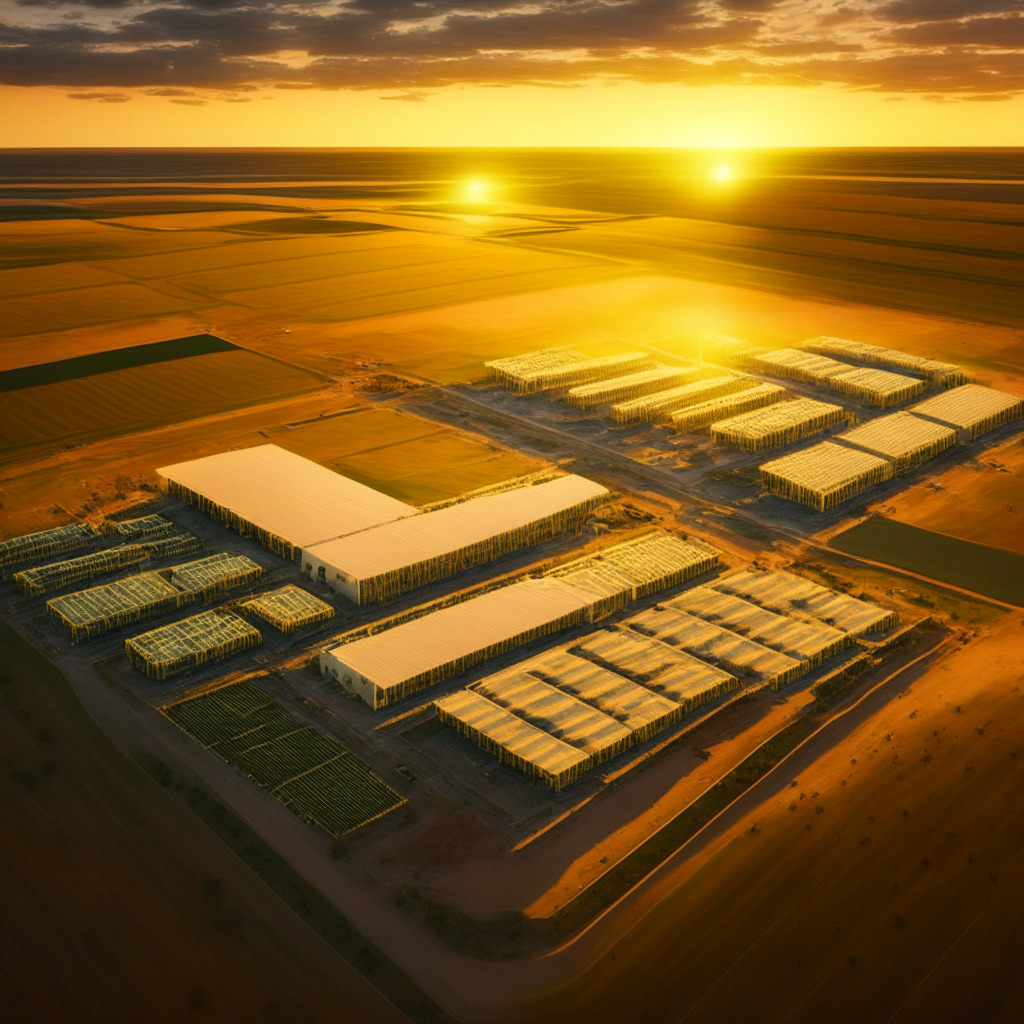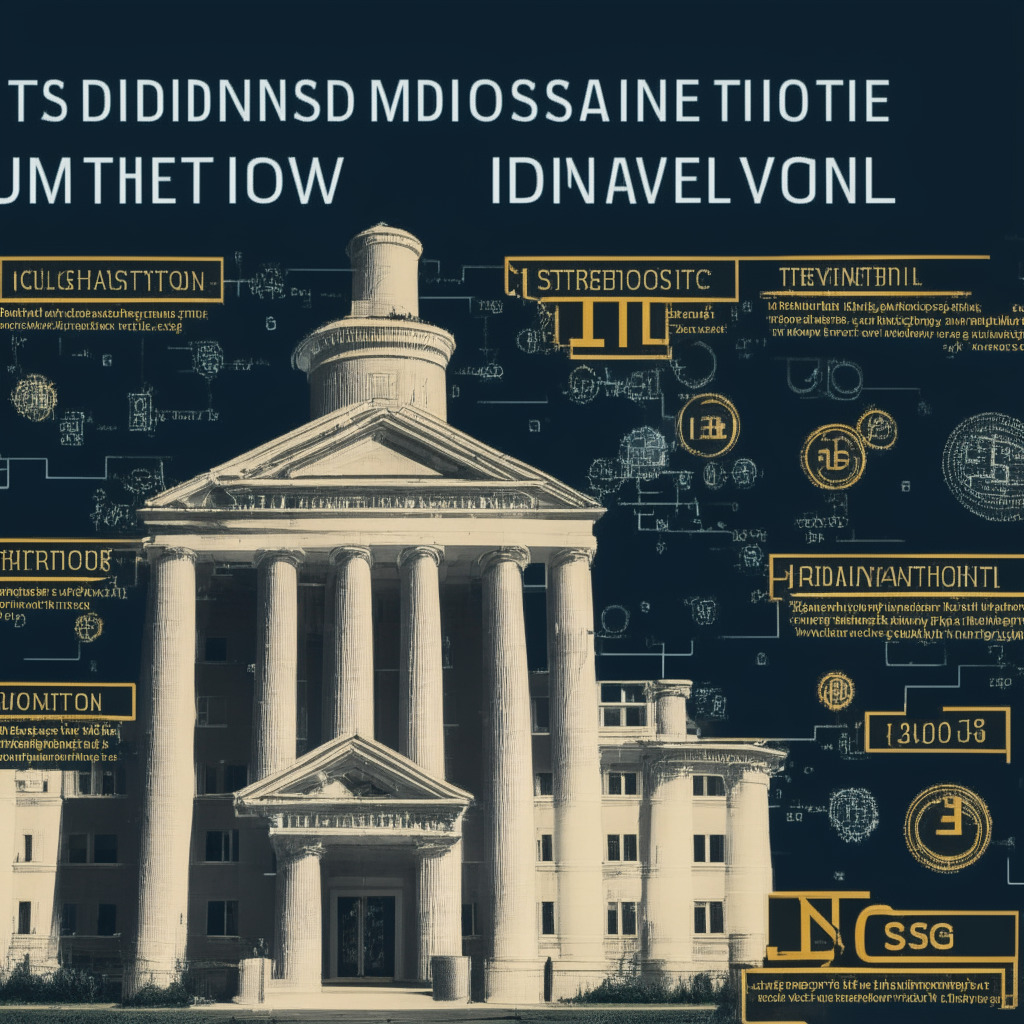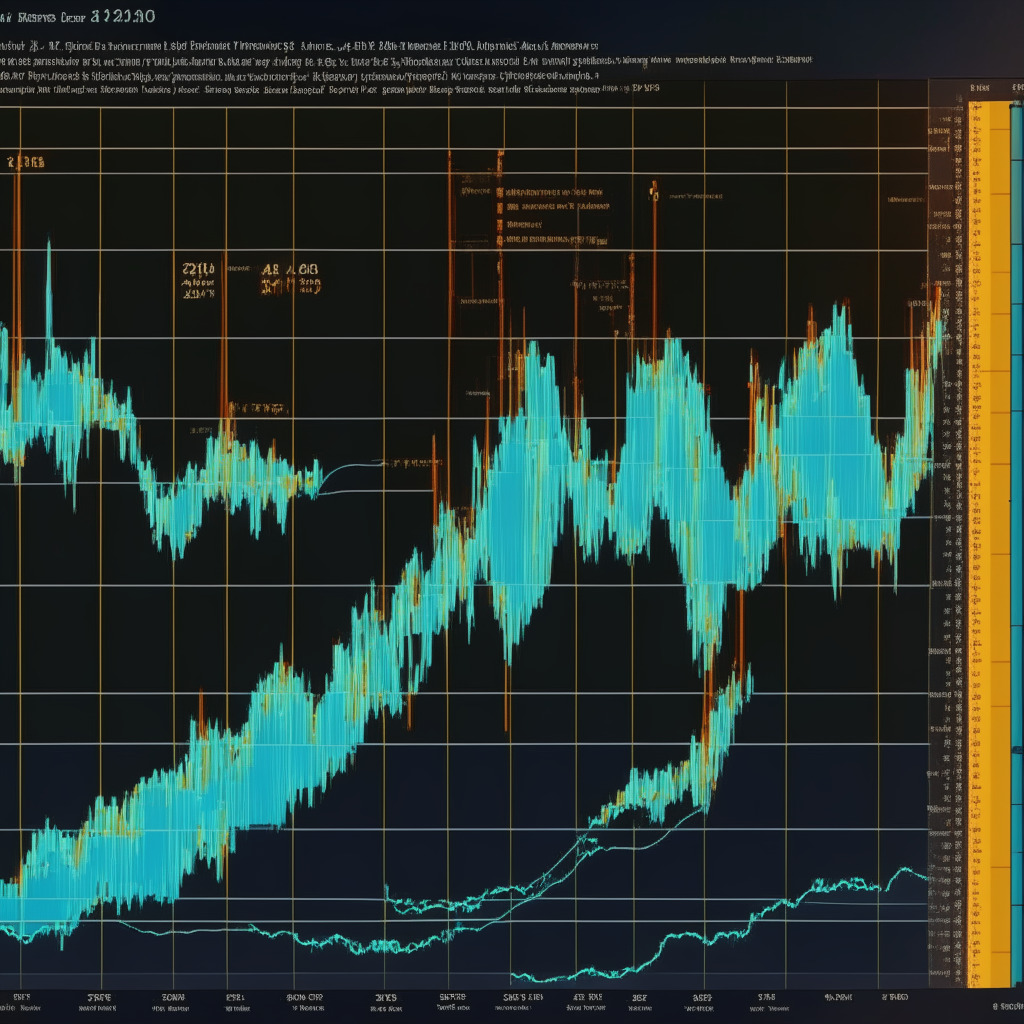CleanSpark has agreed to purchase two ready-to-use mining facilities in Dalton, Georgia for $9.3 million, adding nearly 1 exahash per second capacity to its fleet. This acquisition aims to exceed the company’s year-end target of 16 EH/s, positioning CleanSpark as one of the most power-efficient miners concerning energy-per-hash rate.
Search Results for: CleanSpark
CleanSpark’s $9.3M Expansion: Mining Efficiency vs Uncertain Profitability in Bitcoin Industry
Bitcoin mining firm CleanSpark acquires two mining sites in Georgia for $9.3 million, aiming to achieve a 16 exahash per second (EH/s) hash power target by 2023. The acquisition contributes to a 15% increase in computing power, positioning CleanSpark as an energy-efficient miner. However, long-term profitability amidst market challenges remains uncertain.
Crypto Enthusiast’s Dilemma: CleanSpark’s Bold Acquisition Amid Market Slump
CleanSpark recently acquired 12,500 bitcoin mining rigs for $40.5 million, aiming to significantly increase its computing power by 1.76 EH/s. Despite the ongoing market slump, the company’s ambitious target is to achieve a 16 EH/s hashrate by the end of 2023.
CleanSpark’s Bitcoin Mining Growth Amid Halving Event: Eco-friendly or Greenwashing?
US-based Bitcoin mining company CleanSpark Inc. has doubled its mined Bitcoin in the last quarter compared to Q2 of the previous year but experienced limited revenue growth due to struggling Bitcoin prices. CleanSpark’s CFO, Gary A. Vecchiarelli, mentioned the company’s improved hash rate and CEO Zach Bradford discussed the upcoming Bitcoin halving event, emphasizing efficient mining practices.
Unraveling the Myth: Why Bitcoin Miners Sell off their Daily Mining Rewards
“Bitcoin miners sell their daily BTC rewards not due to market distress, but as part of a strategic approach to drive costs down, enhance operational efficiency, and stabilize profits. Strategies are shaped more by managing operational risks, fueling growth, and tactically responding to crypto market fluctuation rather than signals of distress.”
Navigating the Future of Bitcoin Mining: Sustainable Practices and Next-Gen Technology
“The future of Bitcoin mining focused on sustainable development and increased efficiency at the World Digital Mining Summit. The new Antminer S21 and S21 Hydro ASIC miners were unveiled, showcasing impressive performance. As Bitcoin mining becomes more challenging, the industry is shifting towards efficiency and renewable energy sources. Despite Bitmain’s complicated history, the S21’s impact depends on its reliability, availability, and pricing.”
Unveiling the Veils of DeFi: The Road to Normalization Amidst Risks and Rewards
“Cross-chain bridge Synapse experiences a value sink due to a SYN tokens dump by an anonymous liquidity provider. This highlights potential insecurities in the DeFi space, underscoring the necessity for protective measures and consistent market analysis.”
Crypto Miners Unite: The Digital Energy Council Paves Way Amid Regulatory Tumult
The Digital Energy Council, an alliance of crypto miners, is seeking to influence U.S. policy for friendlier laws on sustainable energy development and grid resilience. However, their goals clash with the Biden administration’s stance, including a proposed 30% tax on mining operations for environmental concerns.
Bitcoin Mining Rig Market Value Crisis: Adaptation or Extinction?
Bitcoin mining rigs are witnessing a significant decrease in market value due to lower profitability and higher energy costs. Next-gen rigs like Bitmain’s S19 XP and WhatsMiner M50S saw a 66% price drop. However, these falling prices may benefit miners preparing for the upcoming Bitcoin halving in 2024, potentially spurring a shift towards more efficient machines.
Decoding the Crypto-Conflict Landscape: Asset Loans, DeFi Security, and Green Mining
Bitget introduces Crypto Loans, allowing users to stake their coin as collateral and borrow in another cryptocurrency, based on market value. As potential pitfalls exist in case of market plunges, the Ethereum community visionaries propose a Circuit Breaker contract for DeFi protocols’ security enhancement, albeit with implementation and manipulation concerns.
Riot Platforms’ Massive ASIC Order: Revolutionizing Bitcoin Mining or Threat to Sustainability?
Riot Platforms acquires 33,280 mining rigs from MicroBT, increasing its hashrate capacity to 20.1 EH/s. The machines, designed for immersion cooling systems, will be deployed by Q1 2024. This groundbreaking development occurs as questions about optimizing efficiency and addressing environmental concerns in the mining industry arise.
Iris Energy’s Hash Rate Expansion: Investing in Data Centers and Venturing into AI
NASDAQ-listed Bitcoin mining firm Iris Energy aims to increase its hash rate capacity by 63% to 9.1 EH/s by early 2024, utilizing its 80MW data center in Texas. The company’s shares surged 21% following the announcement, reflecting a growing interest in the blockchain industry. Iris Energy also explores opportunities in energy-intensive compute applications such as AI.
Navigating
Despite recent regulatory crackdowns on Binance and Coinbase, blockchain and digital assets offer transformative potential that shouldn’t be ignored by long-term investors. Amplify ETF’s Transformational Data Sharing ETF (BLOK) has strategically increased exposure to Bitcoin miners, resulting in a 31% year-to-date growth.
Marathon’s 77% Bitcoin Mining Surge: Proprietary Software or Untapped Capacity?
Bitcoin miner Marathon Digital Holdings experienced a 77% spike in their Bitcoin mining production in May, attributed to its proprietary software, an increased hash rate, rising transaction fees, and the growing popularity of Ordinals protocol. However, maintaining a balanced perspective and managing expectations is advised.
Bitcoin Momentum Amid US Nonfarm Payroll and Mining Expansion: Risks and Rewards
Bitcoin’s price gains momentum as market participants anticipate positive outcomes from the US Non-Farm Payroll data release and its impact on the US dollar. Growing demand in cryptocurrency mining and CFTC’s reassessment of risk management regulations create a bullish momentum for Bitcoin.
New Mining Investments Amidst 44% Decline in Bitcoin Profits: Examining Resolute Companies
Despite a 44% decline in Bitcoin mining profitability over the past year, companies like CleanSpark continue to expand, with CleanSpark recently purchasing 12,500 Antminer S19 XP units for $40.5 million. As mining difficulty reaches an all-time high, the industry demonstrates resilience and optimism, aiming for greater efficiency and productivity.
Crypto Assets as Securities and Evolving Regulations: The Future of EU and Global Markets
A study commissioned by the European Parliament suggests that crypto assets may soon be treated as securities by default, based on the EU’s existing financial regulation framework. This move could lead to a more stringent regulatory environment for cryptocurrencies in the EU. Meanwhile, cross-compatibility of blockchain addresses gains momentum, and Gemini plans to acquire a crypto license in the UAE.
Cryptocurrency Downturn: Marathon Digital’s 12% Drop and the Regulatory Struggle Ahead
Marathon Digital experienced a 12% drop despite reporting better-than-expected Q1 results, possibly due to an SEC subpoena regarding potential securities law violations. As cryptocurrency-linked sector faces a downturn, companies like Marathon and Hut 8 Mining adapt and diversify their business models amid regulatory scrutiny.
Bitcoin Network Congestion: Ordinals Boom Benefits Miners, But At What Cost?
The Bitcoin network faces congestion due to increased demand for Ordinals, a feature allowing digital assets to be inscribed on the blockchain. This has raised miners’ daily revenue to $40 million, but also sparked concerns about network slowdowns and increased transaction costs. Experts predict hype around Ordinals will eventually die down, regulating itself.
Crypto Clash: Memecoin Mania, NFT Downturn, and Mining Stocks Outshine Bitcoin
In April, memecoins’ rise led to a decline in NFT collectibles, with key metrics such as volume and active wallets plunging. However, the NFT lending market experienced a 16.13% increase in new users, indicating consistent growth in this niche sector. Cryptocurrency mining stocks also performed impressively, outperforming Bitcoin’s returns.
Crypto Mining Tax: Balancing Environmental Impact and Industry Growth
The Biden administration proposes a 30% tax on crypto mining firm’s energy costs, aiming to counter environmental pollution, higher energy prices, and increased greenhouse gas emissions. However, this industry-specific penalty could impact profits and faces resistance from congressional Republicans.




















